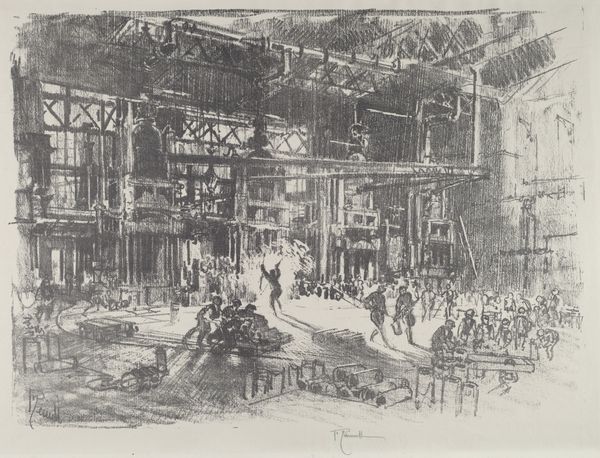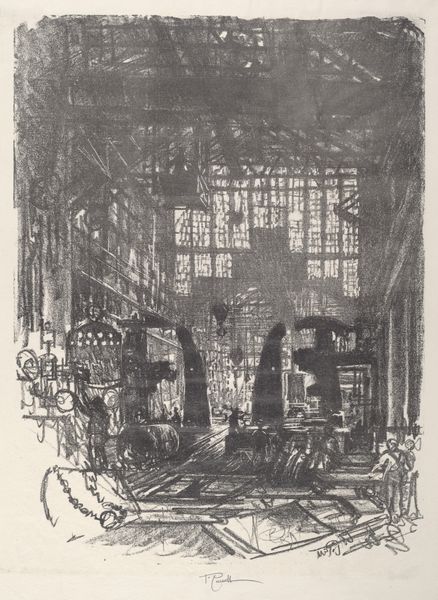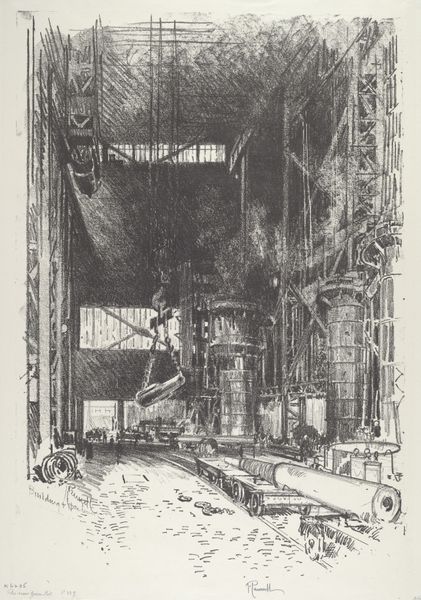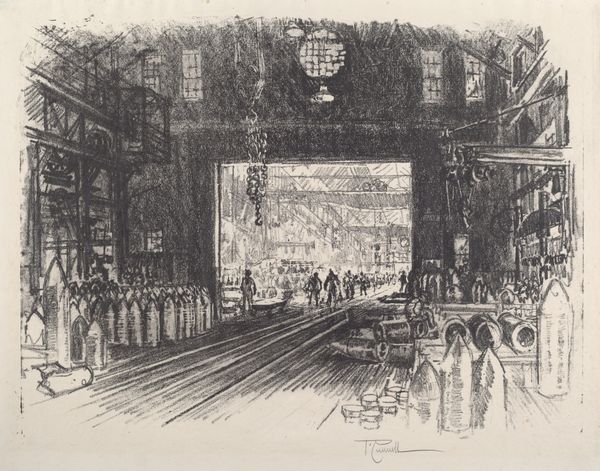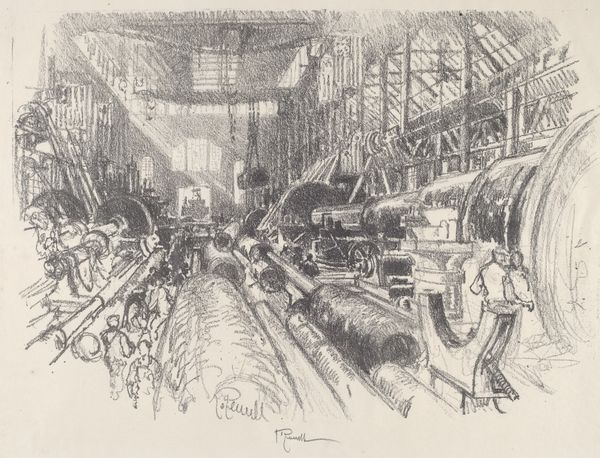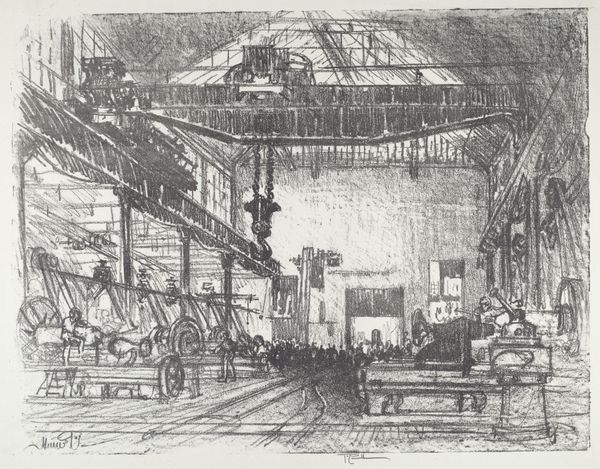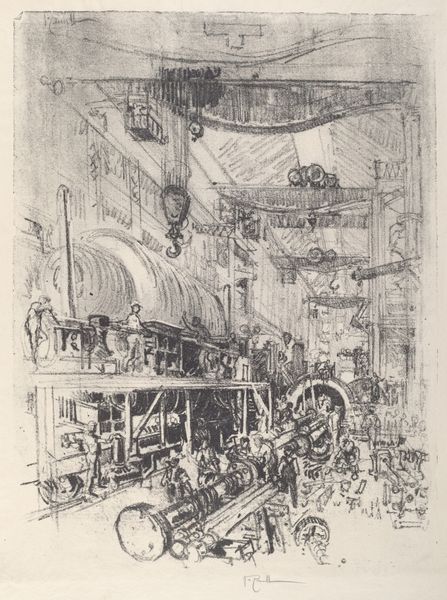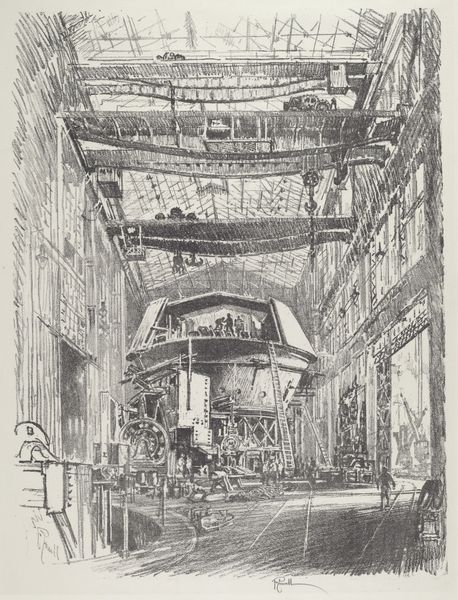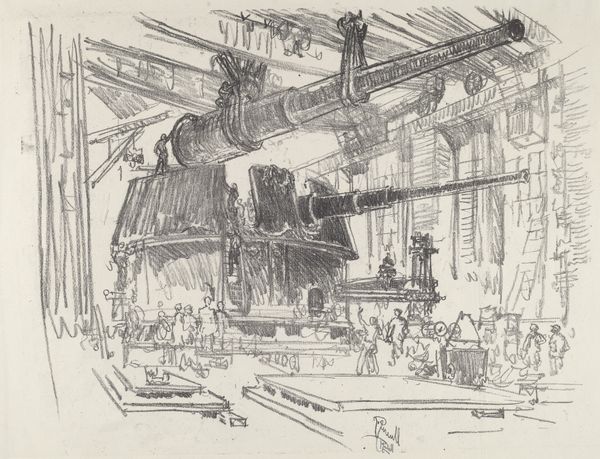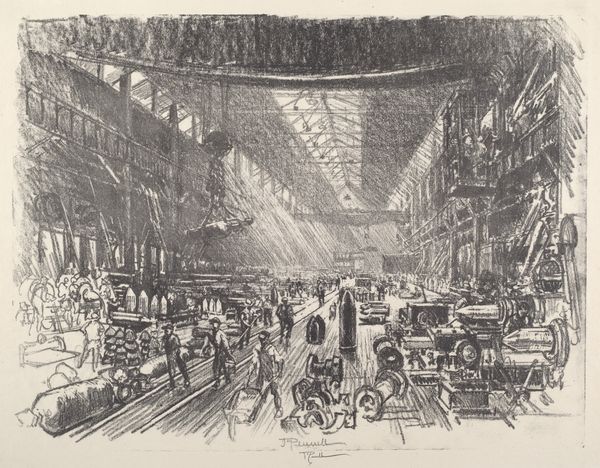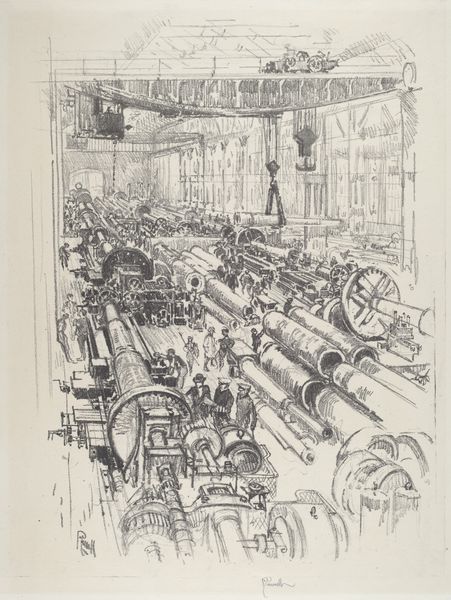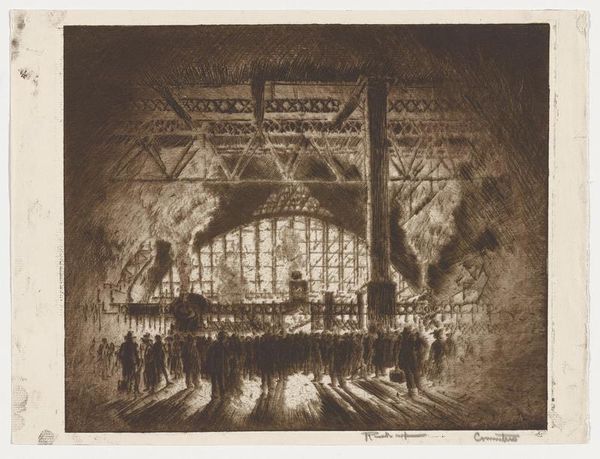
drawing, print, graphite
#
landscape illustration sketch
#
drawing
#
mechanical pen drawing
# print
#
pen sketch
#
linework heavy
#
sketchwork
#
pen-ink sketch
#
thin linework
#
pen work
#
graphite
#
scratch sketch
#
modernism
#
initial sketch
Copyright: National Gallery of Art: CC0 1.0
Curator: "Making Rifles" is a 1917 drawing by Joseph Pennell. It gives us a look inside a factory dedicated to wartime production, likely related to World War I. It appears to be primarily rendered in graphite, ink, and other drawing media. What strikes you about it? Editor: The sheer scale, both of the space and the endeavor. It's almost oppressive in its density, with that high, skeletal roof and row upon row of workers. It really gives a sense of the industrialization of war, turning human effort into a vast, almost dehumanized machine. Curator: The American flag looming in the background immediately grabs my attention. Its presence certainly signifies patriotism, but I wonder if there’s something more complex happening with its symbolic weight. In times of conflict, the flag becomes an almost totemic figure. Editor: Absolutely. Flags can signal shared identity but also, undeniably, nationalistic fervor, which becomes especially potent, and sometimes dangerous, in times of war. And given the date, 1917, we’re right at the moment of US entry into World War I, and with that comes a need to solidify a national identity. The flag naturalizes and perhaps sanitizes all this rifle manufacturing as a patriotic endeavor. Curator: I see the figures at the bottom right as almost ghostly scribbles. They appear like they’re waiting or taking a break. Their sketch-like quality contributes to an uneasy feeling; they seem caught between presence and absence, reminding us of the individual human costs behind these industrial efforts. They almost blend into the landscape of machinery. Editor: They are relegated to the margins, both literally in the composition, and figuratively, within the war effort. It seems to highlight a dehumanization inherent to war; bodies made expendable. There is something hauntingly prescient about that artistic choice. Curator: Looking closely, I keep finding symbolic resonance within what initially seems like simple observation. A simple act of documenting transforms into a contemplation on labor, industry, nationhood and human sacrifice. Editor: It’s unsettling to think about the layers of historical and political complexity embedded within what seems to be a simple image, particularly thinking about labor, identity and what is truly sacrificed at the alter of patriotism. Thanks for unpacking that, Curator.
Comments
No comments
Be the first to comment and join the conversation on the ultimate creative platform.
